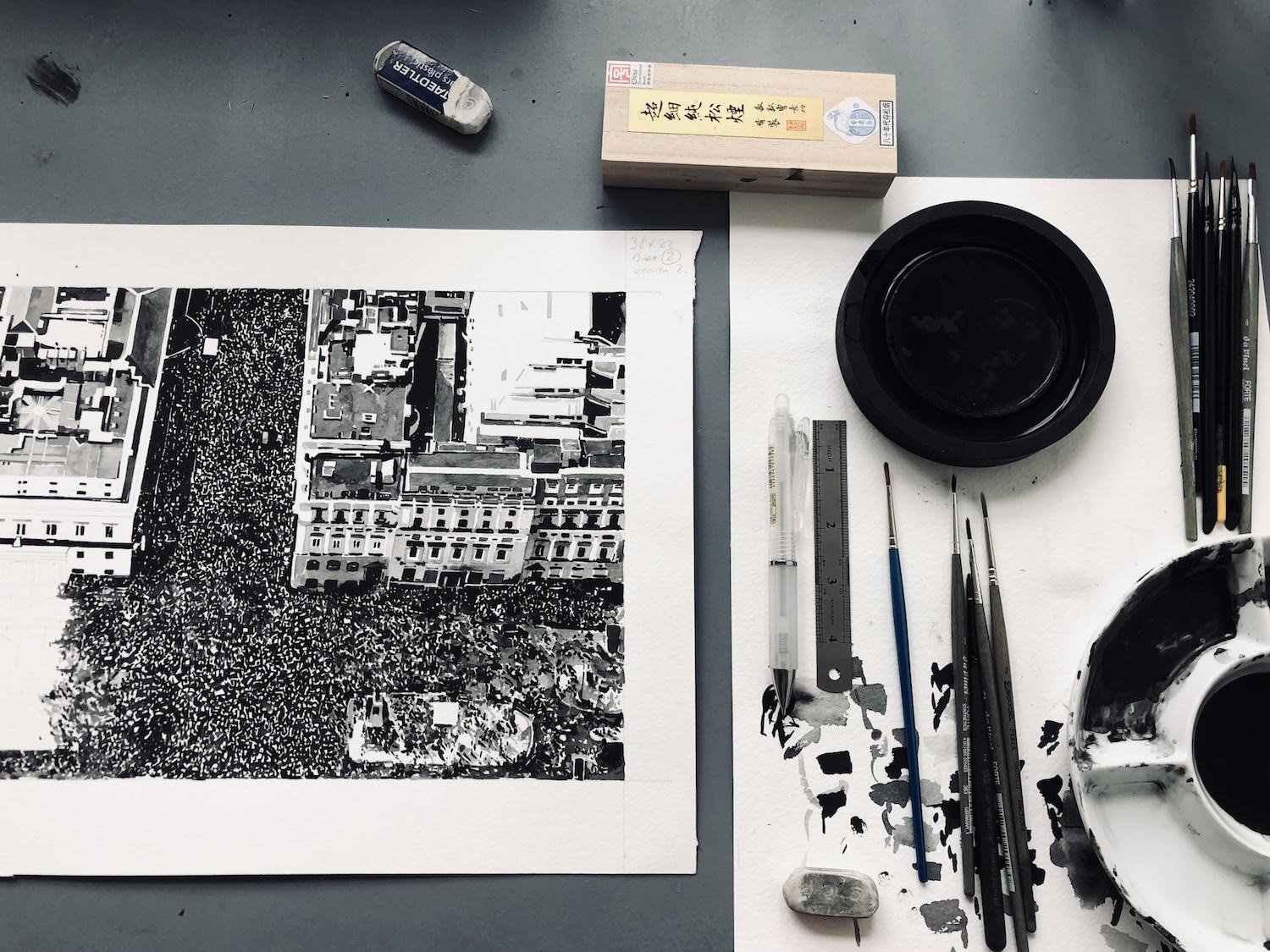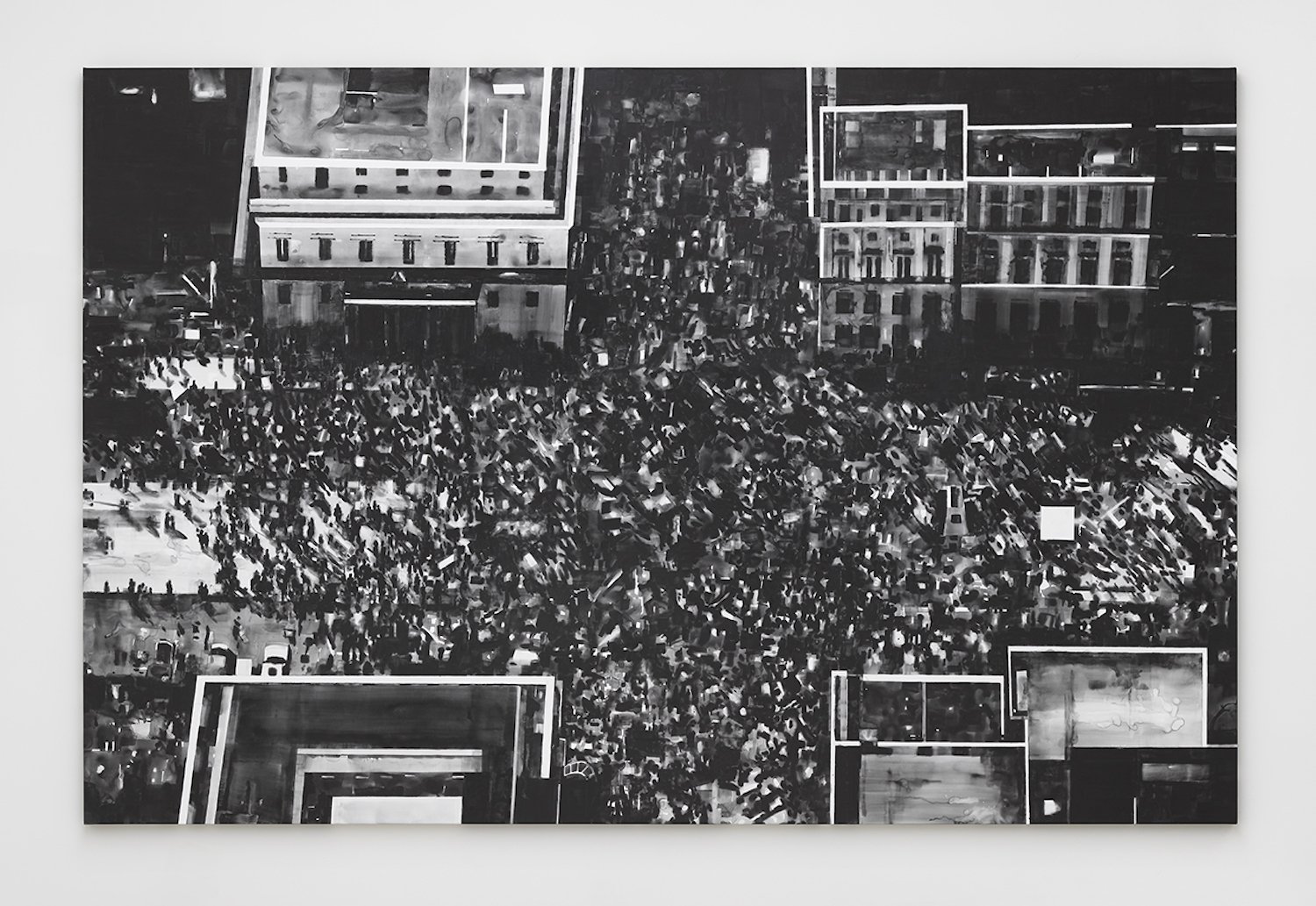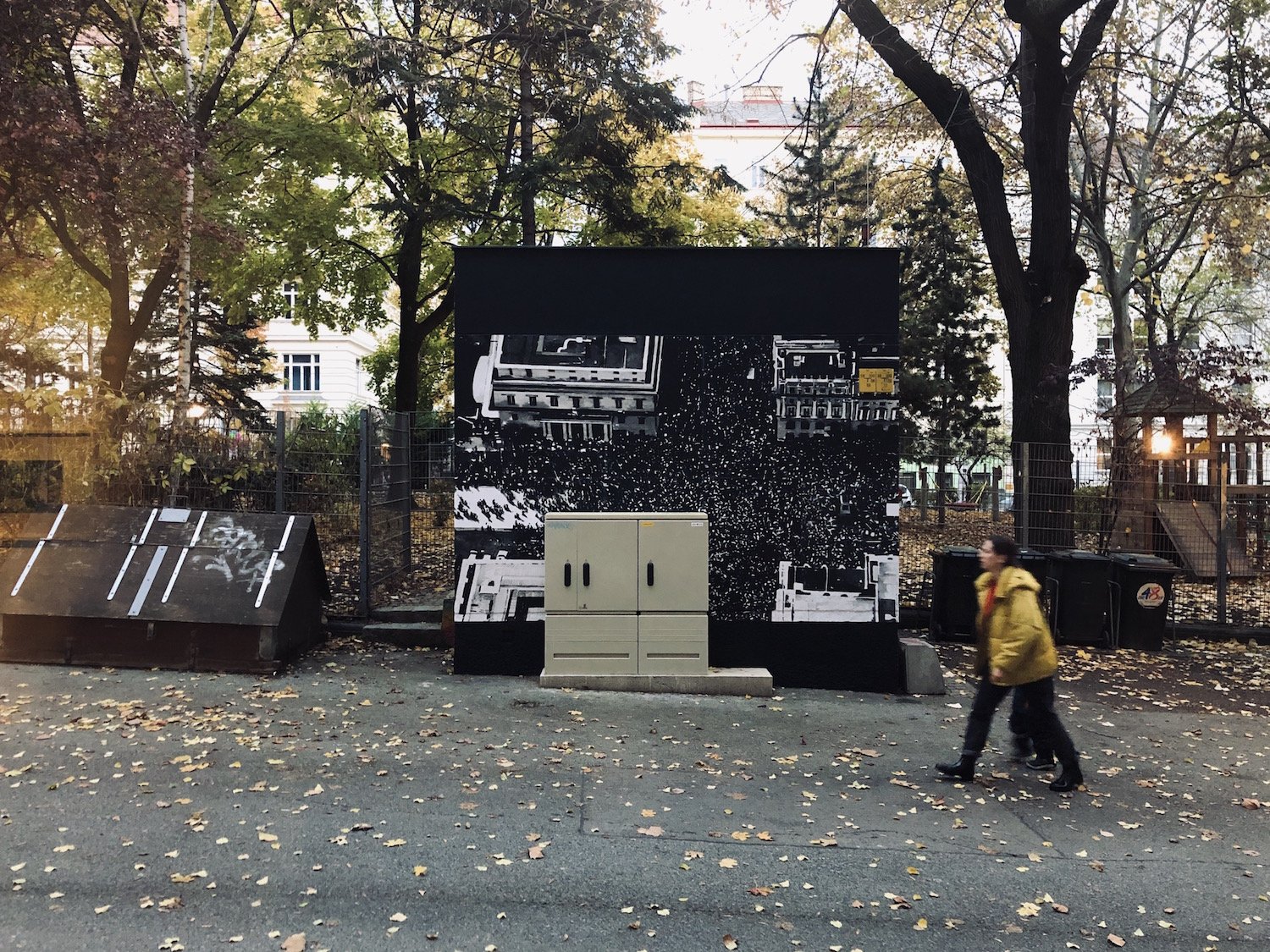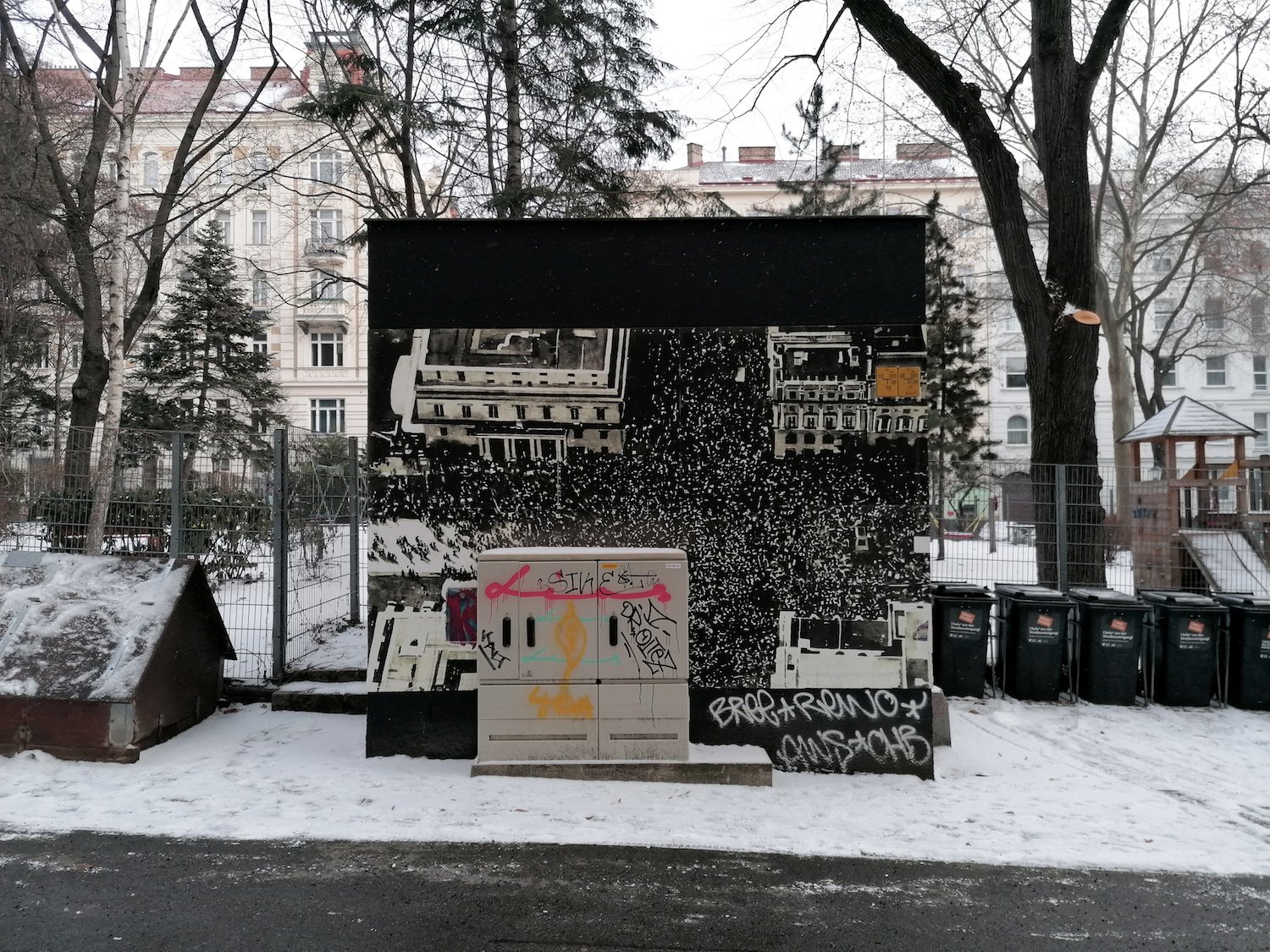Artist Spotlight: Joy Gerrard
Image: Joy Gerrard, Protest Crowd, London (People’s Vote March, 2019) 2020. Japanese ink on paper. Also exhibited as a large digital wall print at the Golden Thread Gallery, Put it to the People, December 2020. Image courtesy of the artist. Photography, Ros Kavanagh.
My drawing (above) Protest Crowd, London (People’s Vote March, 2019) is shown on the cover of this publication. It utilises a media image from the ‘Put it to the People’ rally which took place in Central London on March 23, 2019. There are many things that can deny us certitude in modern media; we find ourselves in a world in transition towards certainties yet to come, and apparently shaped by opinions, ‘spin’ and conspiracies. Here in the UK, we seem to live in a dismal twilight of elite ‘truth management’; cobbled together statements and opportunistically shifting positions and assertions. But, it is impossible to fake a really huge crowd; and on that day well over a million people gathered together on the streets. Of course, this crowd also marked a moment of uncertainty in British government. Prime Minister Theresa May’s administration was see-sawing between positions and the EU was extending deadlines to allow a solution - even a cancellation. At this point, there was an optimism; that possibly the Brexit vote could be undone; the mantra on that day was ‘Revoke, Remain and Reform’. The crowd was immense, drawn from all parts of the UK, political parties and class strata. Many carried signs and placards that satirised and parodied the misinformation broadcast during the referendum. In something akin to the 2003 anti-Iraq War marches, the crowd acknowledged the fear, xenophobia and dog-whistle political tactics that had helped produce the referendum result and its still unfolding outcomes.
Considering this image almost thirty months later I look at it with different eyes. This is, inevitably, what happens when you are an image-maker engaged with reflection upon and representation of recent history. Time moves forward inexorably, and even events that have just happened can be obscured and transformed through the attrition of time and manipulation of truth. Now, in September 2021, there’s a poignancy to this image, maybe a subjective kind of hurt is expressed. Is the defeat of the marchers hopes already ordained?
The work is made up of multiple, tiny marks and planes of grey on a page. I have captured a split second from online helicopter footage and redrawn it with sumi ink on paper using a tiny brush. This takes time, and a combination of mental and physical focus. I’ve attempted to catch ‘an image moment in a world of mirages’ [1] that I hope expresses more than the literal sum of its parts. The crowd is of course contained by the streets and architecture and in this drawing, we see mostly the tops of the buildings. The slanted sides of the constructions show simplified windows where the perspective is a little flattened and naïve. In the right corner, the crowd is fractured and we can just pick out individuals. In the street, the crowd is a unified mass, dissolving into shadowed blots of black in places. The image is grounded and named by the huge placard carried aloft.
I later used this drawing to make a much larger painting; and in this subsequent work, the hallucinatory, fading nature of the crowd is emphasised through the physical dissolution of the ink on canvas. Materiality conjures up a transformational state; and the struggle to anchor and form the image produces a kind of alchemy between the original event, the re-making of it and a final result. In the painting the angles of the buildings are represented by confrontational, oppositional lines; and the text of the large placard almost dissolves entirely, running into the crowd, which itself is semi-liquefied. I exhibited the painting in Vienna at the end of 2019, alongside a set of drawings and a pasted street work, where another Brexit protest was installed and still hangs to this day on a Vienna square.
Of course, the final state of all these images exists in the eye of the viewer, in how they are received, looked at, maybe ignored and judged by those who see them. Some will see a street scene; others will maybe see a representation of resistance. The image is ephemeral; it was real, but floats through time, materials and optics, never really belonging to any of us.
[1] Boal, Clark, Matthews and Watts (2005), Afflicted Powers, p5, Verso
Statement
What happens when democratic processes express and produce social division? How are the outcomes of democratic processes resisted and critiqued? How does protest make use of visual-cultural means to ‘make injury visible’? (Rebecca Solnit)
As a spectacle of resistance, public protest has a long history and is a powerful form of expression in a time of instant, ‘citizen enabled’ global media.
Drawing on over a decade of image-making and research on themes of protest and urban space, Irish artist Joy Gerrard archives and painstakingly remakes media-borne crowd images. Her subjects include climate change, Brexit, BLM protests and women’s equalities. These crowds are re-imaged in large monochrome paintings and small complex drawings made with Japanese ink. The elemental simplicity of Gerrard’s ink drawings and paintings contradicts the material complexity of making. The viewer considers the precarious freedom of protest and the relation between populism and representative democracy. In her work, the figure of the crowd represents an expression of collective agency. Gerrard’s crowds are often viewed from above in built environments, indicating media surveillance. The fluidity and drama of the moment is expressed through precise, expressive mark-making. Moments of protest are thus figured against enduring historical structures and the re-scaling of news images into dramatic, painterly forms disrupts our understanding of their ephemerality.







